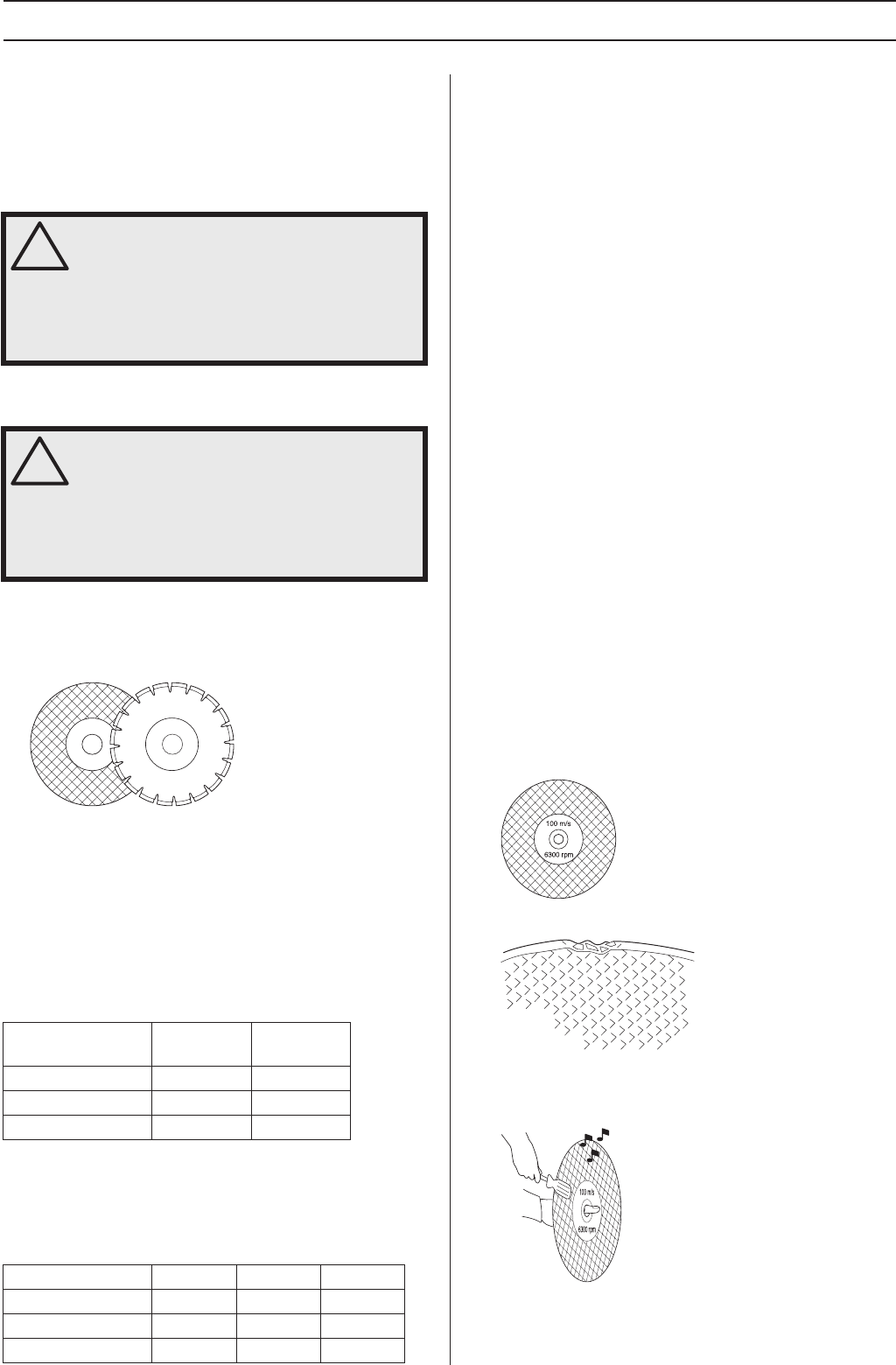
10 – English
SAFETY INSTRUCTIONS
Checking the blade guard
• Check that the guard is complete and without any cracks
or deformations.
• Never use a defective guard or a guard that has not been
fitted correctly.
Cutting blades
General
Cutting blades are available in two basic designs; abrasive
discs and diamond blades.
High-quality blades are often most economical. Lower quality
blades often have inferior cutting capacity and a shorter
service life, which results in a higher cost in relation to the
quantity of material that is cut.
Make sure that the right bushing is used for the cutting blade
to be fitted on the machine. See the instructions under the
heading Assembling the cutting blade.
Suitable cutting blades
*Without water
**Diamond blades for dry cutting
Cutting blades for different materials
Hand-held, high-speed machines
Our cutting blades are manufactured for high-speed, portable
power cutters. If blades from other manufacturers are used,
ensure that the blades conform to all regulations and
demands that concern this type of power cutter.
Special blades
Some cutting blades are designed for stationary equipment
and for use with attachments.Such cutting blades must not be
used on portable power cutters.
Always contact local authorities and make sure you are
following applicable directives.
Blade vibration
The blade can become out-of-round and vibrate if an
excessive feed pressure is used.
A lower feed pressure can stop the vibration. Otherwise
replace the blade. The blade must be of the recommended
type for the material to be cut.
Abrasive discs
The cutting material on abrasive discs consists of grit bonded
using an organic binder. ”Reinforced blades” are made up of
a fabric or fibre base that prevents total breakage at maximum
working speed if the blade should be cracked or damaged.
A cutting blade’s performance is determined by the type and
size of abrasive corn, and the type and hardness of the
bonding agent.
Check that the blade is approved for the same or higher
speed according to the aproval plate of the engine. Never use
a cutting blade with a lower speed rating than that of the
power cutter.
Ensure the blade it not cracked or damaged in any other way.
Test the abrasive disc by hanging it on your finger and tapping
it lightly with a screwdriver or the like. If the disc does not
produce a resonant, ringing sound it is damaged.
!
WARNING! Always check that the guard is
correctly fitted before starting the machine.
Check that the cutting blade is fitted
correctly and does not show signs of
damage. A damaged cutting blade can cause
personal injury. See instructions under the
heading Assembly.
!
WARNING! A cutting blade may burst and
cause injury to the operator.
Never use a cutting blade at a lower speed
rating than that of the power cutter.
Never use a cutting blade for any other
purpose than that it was intended for.
Cutting blades K960
K960
Rescue
Abrasive discs Yes* Yes*
Diamond blades Ye s Yes**
Rescue blade No Ye s
Concrete Metal Plastic
Abrasive discs X X X
Diamond blades X
Rescue blade X X


















